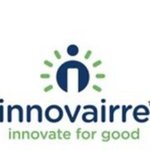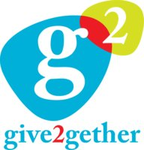Description

GiveCampus

Little Green Light
Comprehensive Overview: GiveCampus vs Little Green Light
Certainly! Below is an overview of GiveCampus and Little Green Light, focusing on their primary functions, target markets, market share, user base, and differentiating factors.
GiveCampus
a) Primary Functions and Target Markets
Primary Functions:
- Fundraising Platform: GiveCampus offers a digital platform for educational institutions to manage their fundraising activities. Its features include peer-to-peer fundraising, donation processing, giving days, recurring donations, and campaigns.
- Engagement Tools: The platform provides engagement tools like volunteer management, social sharing, and donor analytics to help institutions create personalized donor experiences.
Target Markets:
- Educational Institutions: GiveCampus primarily targets K-12 schools, colleges, and universities.
- Nonprofits (Secondary): While its primary focus is on educational institutions, some nonprofits also use GiveCampus for fundraising.
b) Market Share and User Base
- Market Share: GiveCampus has carved out a niche within the education sector, particularly focusing on peer-to-peer fundraising efforts. Its focus on this sector limits its broader market share compared to more generalized fundraising platforms.
- User Base: GiveCampus has hundreds of educational institution clients, but specific numbers can vary as the company evolves.
c) Key Differentiating Factors
- Education-Centric Features: GiveCampus is tailored specifically for educational fundraising, offering features aligned with the needs of schools, like class and alumni-based fundraising campaigns.
- User Engagement: Focus on leveraging social networks for peer-driven campaigns, encouraging students and alumni to participate as advocates.
Little Green Light
a) Primary Functions and Target Markets
Primary Functions:
- Donor Management and CRM: Little Green Light provides a comprehensive donor management system, including contact management, gift processing, and reporting tools.
- Fundraising Tools: It offers capabilities for online donations, event registrations, pledge tracking, and membership management.
Target Markets:
- Nonprofits: Little Green Light primarily targets small to mid-sized nonprofits across various sectors, including education, arts, and human services.
b) Market Share and User Base
- Market Share: Little Green Light has a strong presence within the nonprofit sector, particularly among smaller organizations due to its affordability and scalability.
- User Base: It is widely used by thousands of nonprofits, with a broad base that varies across different causes and sectors.
c) Key Differentiating Factors
- Affordability and Simplicity: Little Green Light appeals to smaller nonprofits due to its cost-effective pricing model and user-friendly interface.
- Broad Sector Use: Unlike GiveCampus, Little Green Light is versatile for a range of nonprofit sectors, not just education.
Comparative Analysis
-
Target Audience and Sector Focus:
- GiveCampus is specifically designed for educational institutions and focuses on peer-led fundraising efforts.
- Little Green Light serves a broader nonprofit audience, fitting various sectors such as education, but not exclusively.
-
Functional Scope and Specialization:
- GiveCampus specializes in engagement-driven fundraising campaigns, leveraging peer networks within educational settings.
- Little Green Light provides a comprehensive donor management system with a broader functionality scope relevant to any nonprofit's fundraising activities.
-
Implementation and Usability:
- GiveCampus could involve a learning curve associated with its campaign-based approach.
- Little Green Light is noted for its ease of use, especially appealing to organizations that might not have dedicated IT staff.
Overall, GiveCampus and Little Green Light cater to different types of organizations with some overlap in educational nonprofits but maintain distinct strengths that define their user base and market approach.
Contact Info

Year founded :
2014
+1 301-939-0904
Not Available
United States
http://www.linkedin.com/company/givecampus

Year founded :
2007
+1 877-820-6109
Not Available
United States
http://www.linkedin.com/company/little-green-light
Feature Similarity Breakdown: GiveCampus, Little Green Light
Sure, let's break down the feature comparison for GiveCampus and Little Green Light, focusing on their core features, user interfaces, and unique offerings.
a) Core Features in Common
-
Fundraising Tools:
- Both platforms provide tools for managing donations and fundraising campaigns. They cater to educational institutions looking to streamline their fundraising efforts.
-
Donor Management:
- They offer CRM functionalities that allow organizations to track donor information and interactions efficiently.
-
Reporting and Analytics:
- Both GiveCampus and Little Green Light offer robust reporting and analytics features to monitor fundraising performance and donor engagement.
-
Communication Tools:
- Email and other communication tools are part of both platforms, enabling organizations to maintain contact with their donor base.
-
Event Management:
- They have features for managing events, though the depth and specifics might vary, both products allow organizations to plan and execute events related to fundraising.
b) User Interfaces Comparison
-
GiveCampus:
- The interface of GiveCampus is generally sleek and modern, focusing on user engagement. It is designed to be intuitive for both the fundraising teams and the donors, emphasizing ease of use to facilitate quick donations and campaign setup.
-
Little Green Light:
- Little Green Light’s interface is also user-friendly but leans more towards robust data management. It's generally more suited for users who might require detailed data manipulation and reporting functions, which might make it slightly less visually polished compared to GiveCampus.
c) Unique Features
-
GiveCampus:
- Peer-to-Peer Fundraising: One of the standout features of GiveCampus is its peer-to-peer fundraising capabilities. This allows donors and supporters to create their campaigns to augment the organization's main fundraising efforts.
- Social Sharing: GiveCampus heavily integrates social sharing options, enabling campaigns to be easily spread across social networks, enhancing visibility and outreach.
-
Little Green Light:
- Flexible CRM Capabilities: Little Green Light offers more extensive customization in terms of CRM functionality, making it highly adaptable for various nonprofit needs beyond fundraising, like managing memberships, volunteers, and potential donor cultivation.
- Integration with Other Software: It provides seamless integration with other nonprofit management tools and platforms, offering flexibility in how it can be adopted into existing workflows.
In summary, while both GiveCampus and Little Green Light share common functionalities essential for fundraising and donor management, they target slightly different needs in terms of their user interface and unique features. GiveCampus excels in facilitating peer-to-peer fundraising and social sharing, whereas Little Green Light offers a comprehensive CRM experience with robust integration capabilities.
Features

Not Available

Not Available
Best Fit Use Cases: GiveCampus, Little Green Light
GiveCampus
a) Best Fit Use Cases for GiveCampus:
- Educational Institutions: GiveCampus is specifically designed for educational institutions, including K-12 schools, colleges, and universities. It excels in handling the unique needs of school fundraising campaigns, making it ideal for annual funds, capital campaigns, class gift challenges, and alumni engagement.
- Large-Scale Fundraising Campaigns: For institutions aiming to run large, coordinated fundraising events, GiveCampus offers features that can handle high volumes of transactions and interactions, such as peer-to-peer fundraising, event ticketing, and campaign analytics.
- Social and Mobile Fundraising: When a project requires modern, interactive, and highly social fundraising initiatives, GiveCampus provides tools to facilitate sharing across social media platforms and optimize for mobile engagement.
d) Catering to Industry Verticals or Company Sizes:
- Educational Focus: Mainly targets educational institutions, regardless of size, due to its specialized tools and features tailored for the educational sector.
- Scalability: While it is well-suited for large institutions due to its comprehensive feature set, smaller schools can also benefit from its user-friendly interface and targeted functionality.
Little Green Light
b) Preferred Use Cases for Little Green Light:
- Nonprofit Organizations: Little Green Light is a versatile option for various nonprofit organizations, including community organizations, religious institutions, arts and cultural groups, and environmental nonprofits.
- Donor Management Needs: Organizations that need robust donor management capabilities, including tracking relationships, managing donations and pledges, and maintaining detailed donor records, will find LGL’s CRM functionality beneficial.
- Small to Medium-Sized Organizations: It’s particularly advantageous for smaller to medium-sized organizations that need a flexible and cost-effective solution for fundraising and constituent management without the complexity of larger systems.
d) Catering to Industry Verticals or Company Sizes:
- Broad Nonprofit Appeal: While not limited to specific nonprofit sectors, Little Green Light supports a range of nonprofit organizations with its flexible and customizable features.
- Adaptable for Various Sizes: LGL is well-suited for small and medium-sized nonprofits, offering a scalable solution that can grow with the organization while remaining accessible and easy to use for teams with limited resources.
Key Differences:
- Target Audience: GiveCampus primarily targets educational institutions, while Little Green Light caters to a broader range of nonprofit organizations.
- Functionality Focus: GiveCampus emphasizes large-scale educational fundraising and social engagement, whereas Little Green Light focuses more on donor management and CRM capabilities for diverse nonprofit needs.
- Scalability and Size: Both platforms are scalable, but GiveCampus is often favored by larger educational institutions, while Little Green Light is appreciated by smaller to mid-sized nonprofits for its affordability and ease of use.
Pricing

Pricing Not Available

Pricing Not Available
Metrics History
Metrics History
Comparing teamSize across companies
Conclusion & Final Verdict: GiveCampus vs Little Green Light
Conclusion and Final Verdict for GiveCampus vs. Little Green Light
a) Best Overall Value:
Determining the best overall value between GiveCampus and Little Green Light depends on the specific needs and goals of the organization. However, generally:
- Little Green Light is often seen as offering better overall value for smaller to medium-sized non-profits or educational institutions that need a comprehensive donor management system with a focus on CRM capabilities.
- GiveCampus is typically favored by educational institutions looking specifically for a peer-to-peer fundraising platform that excels in crowdfunding and engaging alumni networks through social and mobile channels.
b) Pros and Cons:
GiveCampus Pros:
- Specialized Fundraising: Tailored specifically for educational institutions, offering tools like crowdfunding, peer-to-peer campaigns, and social sharing that drive engagement.
- Modern Interface: User-friendly and optimized for mobile use, which is critical for engaging younger generations of donors.
- Integration: Strong integration capabilities with existing payment systems and educational management platforms.
GiveCampus Cons:
- Limited CRM Features: Not as robust in donor management capabilities compared to dedicated CRM systems.
- Potential Cost: May be more cost-intensive compared to broader CRM systems if not primarily focused on peer-to-peer fundraising.
Little Green Light Pros:
- Robust CRM Features: Comprehensive donor management tools, including tracking, reporting, and segmentation.
- Affordability: Generally more cost-effective for small to medium-sized organizations seeking all-in-one donor management.
- Customization: Flexible enough to accommodate various types of fundraising, event management, and donor engagement activities.
Little Green Light Cons:
- Specialization Limitation: Not tailored specifically for educational institutions or peer-to-peer campaigns, which could be limiting for organizations primarily focused on these areas.
- Interface and Usability: While effective, the interface may not be as modern or user-focused as some newer platforms specialize in specific fundraising activities.
c) Recommendations:
-
Understand Your Needs: Organizations should conduct a detailed assessment of their needs, focusing on whether they need a specialized fundraising tool (GiveCampus) or a comprehensive donor relationship management system (Little Green Light).
-
Consider Institutional Focus: Educational institutions with a strong focus on leveraging alumni networks and social engagement for fundraising will likely find GiveCampus more pertinent to their goals.
-
Budget and Scaling: Assess your budget constraints and potential for scalability. Little Green Light might offer a more scalable solution for growing CRM needs at a lower price point.
-
Integration Needs: Consider any existing systems you use and check which platform offers better integration. For instance, GiveCampus might have more relevant integrations for those already using specific educational tools.
Ultimately, the choice between GiveCampus and Little Green Light should align with the organization’s strategic goals, budget constraints, and the primary fundraising methods they wish to enhance. Decision-makers should seek demos, evaluate both platforms in the context of their long-term objectives, and consult user reviews or case studies from similar organizations.
Add to compare
Add similar companies




